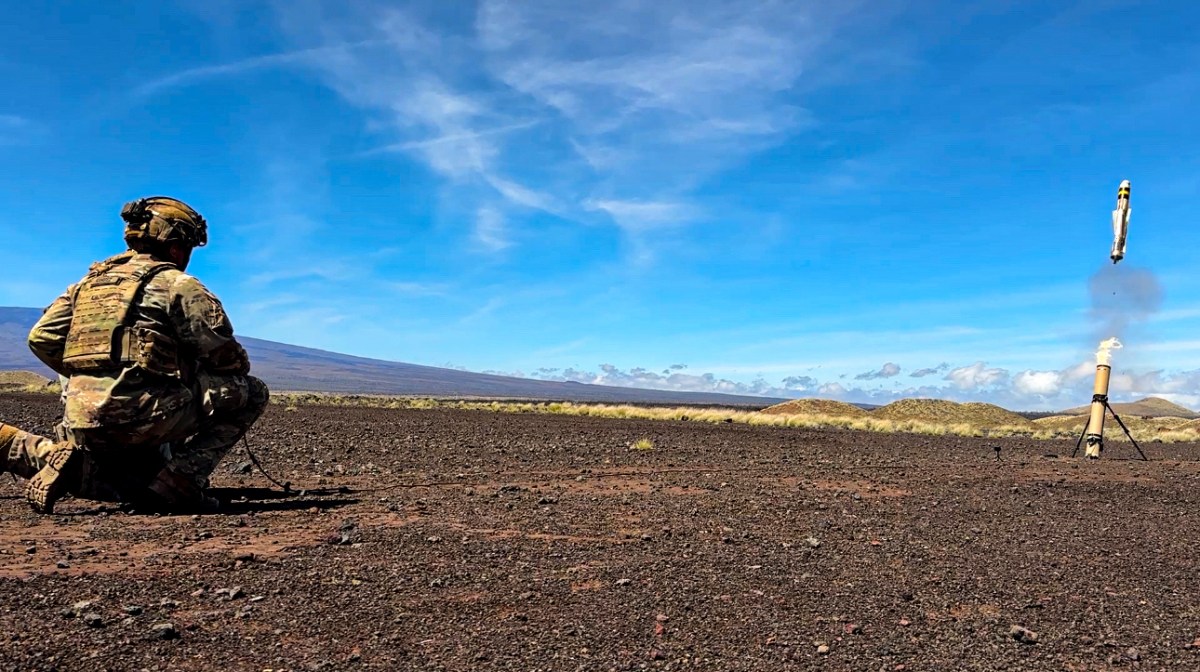DOD touts ‘successful transition’ for Replicator initiative — but questions linger

Questions are swirling in the wake of reports that swarms of lethal drones and associated capabilities are “transitioning” to appropriate military personnel via the first tranche of the Pentagon’s Replicator initiative.
Several current and former defense officials suggested in recent weeks that hundreds of uncrewed systems have been delivered to U.S. military personnel on an accelerated two-year deadline, so far.
That quantity is less than the original goal to field systems at a scale of multiple thousands across various domains within a timeframe of 18-24 months — an objective that Defense Department leaders under the former Biden administration set in August 2023.
“This administration is taking steps to ensure the successful transition of proven Replicator capabilities to the appropriate end state users in the services and military operations community,” a defense official told DefenseScoop in an email on Friday.
They declined to provide more information about the current status, cost and progress of the DOD’s Replicator program, beyond that statement. Several DOD and military spokespersons also did not share updates in response to multiple requests for comment over the last week.
At the time of its launch, Replicator was billed as an accelerated technology and acquisition modernization campaign designed to counter China’s massive military buildup in the Indo-Pacific, by incentivizing U.S. production capacity and the services’ adoption of drones en masse — through replicable processes — at a faster pace than before.
The Pentagon’s Defense Innovation Unit (DIU) was charged in those early days with spearheading the effort.
DefenseScoop reported that the first two tranches — named Replicator 1.1 and 1.2 — involved the selection of different maritime and aerial drones, and associated counter-drone assets for mass domestic manufacturing. In September 2024, senior defense officials announced that, building on that momentum, Replicator 2.0 would drive the high-volume production of assets designed to detect and destroy enemy drones.
DOD has remained secretive about Replicator since its inception.
According to a recent report issued by the Congressional Research Service, “some members of Congress have stated that it has been difficult for them to obtain information about Replicator, and have asked DOD to brief them with further details about Replicator capabilities, systems, and concepts of operation.”
“Lack of information on Replicator, either in the classified or unclassified realms, has the potential to raise doubts about whether DOD has adequately analyzed the initiative in terms of capabilities and costs,” the document noted.
The report pointed to a variety of other ethical, financial and functional challenges connected to the program that might need to be resolved in the near term.
There’s also been speculation in recent months about the new Trump administration’s vision for Replicator — and whether plans were in the works to transform or terminate it as officials pursue new drone and counter-drone work.
The Pentagon has also been tight-lipped about what’s been fielded to military personnel to date. The initial delivery deadline was set for around mid-August 2025.
During a recent Brookings Institution event, T.S. Allen, the former director of Replicator-1 at DIU, said his team helped supply “hundreds of drones to warfighters,” between late 2023 and the time of his departure earlier this summer. He also suggested there were “thousands more on contract” that were “still rolling off the assembly line” when he left.
Separately, last week at the National Defense Industrial Association’s annual Emerging Technologies for Defense conference, DIU’s Commercial Engagement Director Sarah Pearson referred to Replicator as a “prototype effort” that the unit is now “transitioning” to the military services.
Defense officials did not verify those revelations or provide more details to DefenseScoop about what’s next for Replicator under DIU — particularly in the wake of former Director Doug Beck’s resignation.






